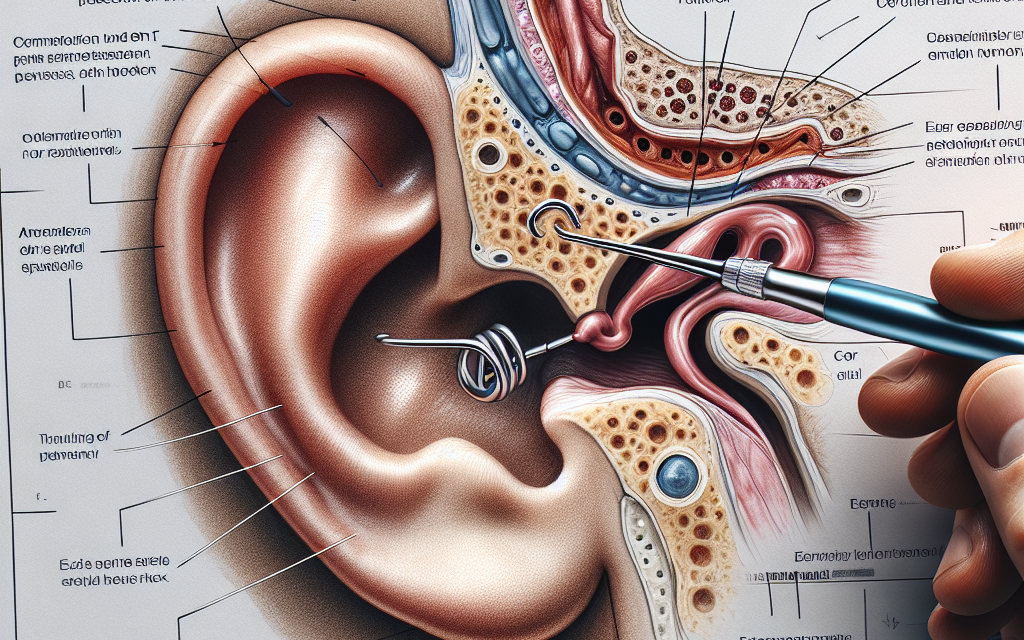The Role of Cerumen Hooks in Safe Earwax Removal by ENT Specialists
Earwax, or cerumen, is a natural substance produced by the glands in the ear canal. While it serves several protective functions, excessive buildup can lead to discomfort, hearing loss, and other complications. Ear, Nose, and Throat (ENT) specialists often employ various tools to safely remove earwax, with cerumen hooks being one of the most effective instruments. This article delves into the role of cerumen hooks in safe earwax removal, exploring their design, usage, benefits, and the best practices for ENT specialists.
Understanding Cerumen and Its Functions
Cerumen, commonly known as earwax, is a yellowish, waxy substance produced in the ear canal. It plays a crucial role in maintaining ear health. Understanding its functions is essential for appreciating the need for safe removal methods.
The Composition of Cerumen
Cerumen is composed of a mixture of secretions from sebaceous glands, sweat glands, and sloughed-off skin cells. Its composition can vary significantly among individuals, influenced by factors such as genetics, environment, and hygiene practices. The primary components include:
- Fatty acids
- Cholesterol
- Alcohols
- Proteins
This unique composition gives cerumen its characteristic properties, such as its ability to trap dust and debris, preventing them from reaching the eardrum.
Protective Functions of Cerumen
Cerumen serves several protective functions, including:
- Antimicrobial Properties: Cerumen contains antimicrobial agents that help prevent infections in the ear canal.
- Moisture Regulation: It helps maintain the moisture balance in the ear canal, preventing dryness and irritation.
- Debris Trapping: Cerumen traps dust, dirt, and other foreign particles, preventing them from reaching the inner ear.
These functions highlight the importance of cerumen in ear health, but they also underscore the need for careful management when excessive buildup occurs.
When is Earwax Removal Necessary?
While cerumen is beneficial, excessive buildup can lead to various issues, necessitating removal. Some common indications for earwax removal include:
- Hearing loss or muffled hearing
- Earache or discomfort
- Itching or irritation in the ear canal
- Discharge from the ear
- Increased risk of ear infections
ENT specialists are trained to assess these symptoms and determine when intervention is necessary, ensuring that earwax removal is performed safely and effectively.
The Design and Functionality of Cerumen Hooks
Cerumen hooks are specialized instruments designed for the safe removal of earwax. Their design and functionality are critical to their effectiveness in clinical settings.
Design Features of Cerumen Hooks
Cerumen hooks come in various designs, but they generally share some common features:
- Material: Most cerumen hooks are made from stainless steel or other non-corrosive materials, ensuring durability and ease of sterilization.
- Shape: The hook is typically curved, allowing for easy maneuvering within the ear canal.
- Size: Cerumen hooks come in different sizes to accommodate various ear canal anatomies.
These design features make cerumen hooks an essential tool for ENT specialists, allowing them to perform earwax removal with precision and safety.
How Cerumen Hooks Work
The primary function of a cerumen hook is to gently grasp and remove impacted earwax. The process involves:
- Visual Inspection: Before using a cerumen hook, ENT specialists conduct a thorough examination of the ear canal using an otoscope.
- Gentle Manipulation: The cerumen hook is carefully inserted into the ear canal to avoid damaging the delicate skin or the eardrum.
- Removal: Once the hook is positioned near the cerumen, the specialist gently lifts and removes the wax.
This method minimizes discomfort and reduces the risk of complications associated with earwax removal.
Advantages of Using Cerumen Hooks
Cerumen hooks offer several advantages over other earwax removal methods, such as cotton swabs or ear syringing:
- Precision: Cerumen hooks allow for targeted removal of wax without pushing it further into the ear canal.
- Safety: When used by trained professionals, cerumen hooks significantly reduce the risk of injury to the ear canal or eardrum.
- Effectiveness: They are particularly effective for removing hard or impacted cerumen that may not be easily dislodged by other methods.
These advantages make cerumen hooks a preferred choice for ENT specialists when addressing earwax-related issues.
Best Practices for Safe Earwax Removal
While cerumen hooks are effective tools for earwax removal, their use must be accompanied by best practices to ensure patient safety and comfort.
Patient Assessment and Preparation
Before any earwax removal procedure, a thorough patient assessment is essential. ENT specialists should:
- Conduct a Medical History Review: Understanding the patient’s medical history, including any previous ear problems or surgeries, is crucial.
- Perform a Physical Examination: A visual inspection of the ear canal helps determine the extent of cerumen buildup and the appropriate removal method.
- Discuss Patient Concerns: Addressing any patient concerns or fears about the procedure can help alleviate anxiety.
Proper preparation sets the stage for a successful and safe earwax removal process.
Technique and Instrumentation
The technique used during earwax removal is critical for ensuring safety. ENT specialists should:
- Use Proper Lighting: Adequate lighting is essential for visualizing the ear canal and cerumen.
- Maintain Sterility: All instruments, including cerumen hooks, should be sterilized to prevent infection.
- Employ Gentle Techniques: Careful and gentle manipulation of the cerumen hook minimizes discomfort and reduces the risk of injury.
These techniques contribute to a safer and more effective earwax removal experience for patients.
Post-Removal Care and Follow-Up
After earwax removal, proper post-care is essential to ensure patient comfort and prevent complications. ENT specialists should:
- Provide Aftercare Instructions: Patients should be informed about what to expect after the procedure and any signs of complications to watch for.
- Schedule Follow-Up Appointments: Follow-up visits may be necessary to monitor the ear canal and ensure no further issues arise.
- Educate on Ear Hygiene: Patients should be educated on proper ear hygiene practices to prevent future cerumen buildup.
Effective post-removal care enhances patient satisfaction and promotes long-term ear health.
Case Studies and Real-World Applications
Examining real-world applications of cerumen hooks in clinical settings provides valuable insights into their effectiveness and safety.
Case Study 1: Impacted Cerumen in an Elderly Patient
An elderly patient presented with hearing loss and discomfort due to impacted cerumen. After a thorough assessment, the ENT specialist decided to use a cerumen hook for removal. The procedure involved:
- Visual inspection with an otoscope to assess the extent of the blockage.
- Gentle insertion of the cerumen hook to grasp the impacted wax.
- Successful removal of the cerumen, resulting in immediate improvement in hearing.
This case highlights the effectiveness of cerumen hooks in addressing earwax-related issues, particularly in patients with limited mobility or dexterity.
Case Study 2: Complications from Improper Earwax Removal
A young patient experienced complications after attempting to remove earwax at home using cotton swabs. The patient developed an ear infection due to pushed-in cerumen. An ENT specialist used a cerumen hook to safely remove the impacted wax and treat the infection. The steps taken included:
- Assessment of the ear canal for signs of infection.
- Careful removal of the impacted cerumen using a cerumen hook.
- Prescribing antibiotics to address the infection.
This case underscores the importance of professional intervention for earwax removal and the potential risks associated with improper techniques.
Statistics on Earwax Removal Procedures
Statistics provide insight into the prevalence and importance of earwax removal procedures. According to a study published in the Journal of Otolaryngology, approximately 10% of adults experience significant earwax buildup requiring professional removal. Furthermore, the American Academy of Otolaryngology reports that:
- Over 12 million earwax removal procedures are performed annually in the United States.
- Complications from improper earwax removal techniques account for a significant percentage of emergency room visits related to ear issues.
These statistics highlight the necessity of safe and effective earwax removal practices, reinforcing the role of cerumen hooks in clinical settings.
Conclusion
Cerumen hooks play a vital role in the safe and effective removal of earwax by ENT specialists. Their design, functionality, and advantages make them an essential tool in clinical practice. By adhering to best practices for patient assessment, technique, and post-removal care, ENT specialists can ensure a positive experience for patients while minimizing risks. Real-world case studies and statistics further emphasize the importance of professional intervention in earwax removal. As awareness of ear health continues to grow, the role of cerumen hooks will remain crucial in promoting safe and effective ear care.





